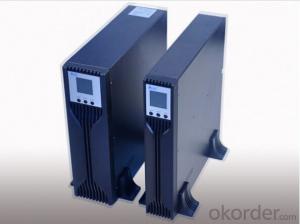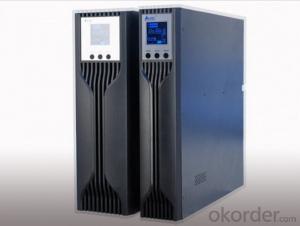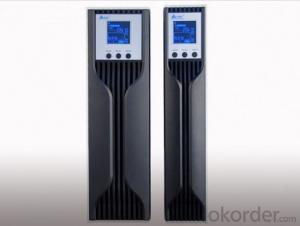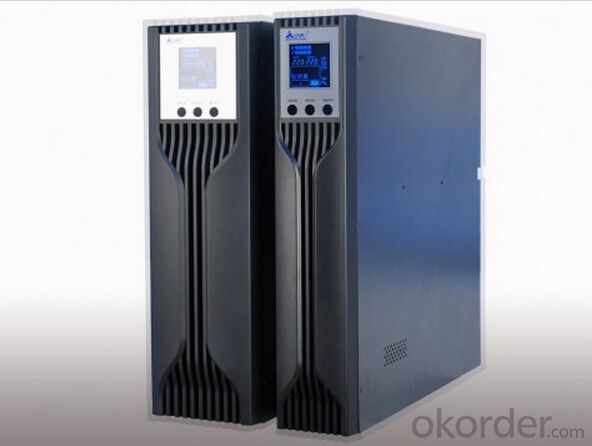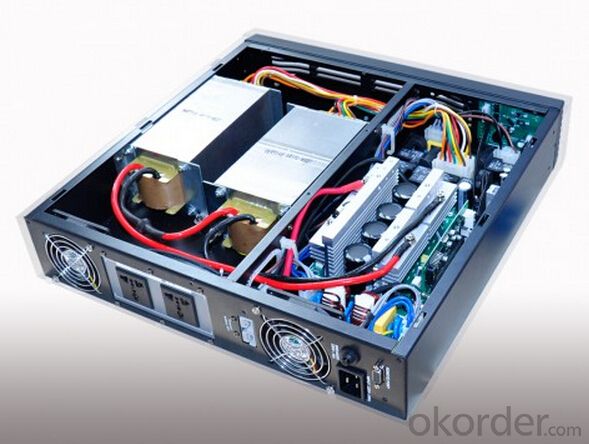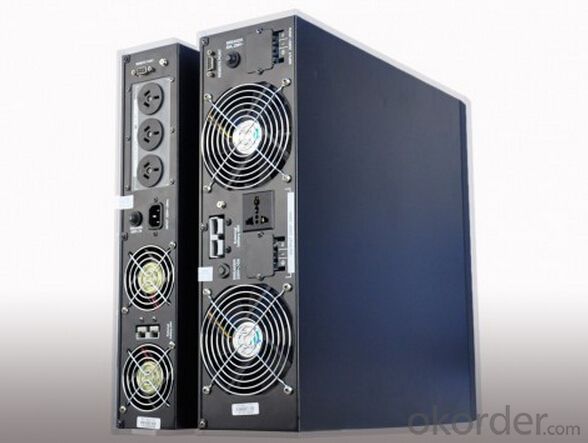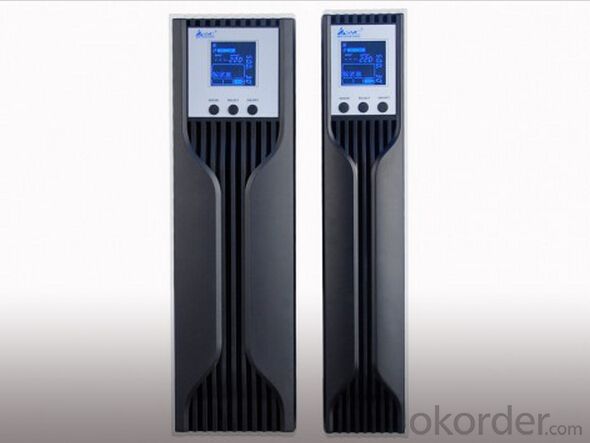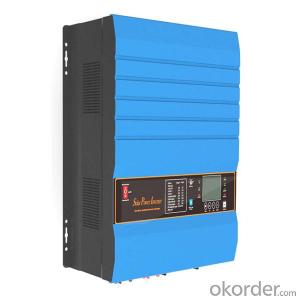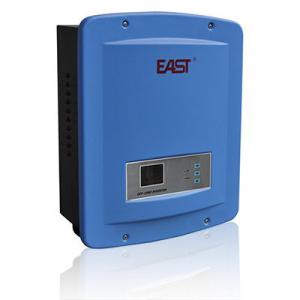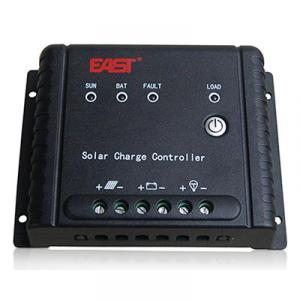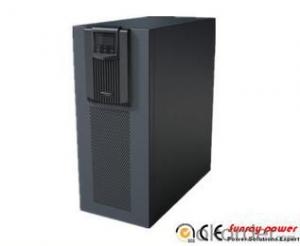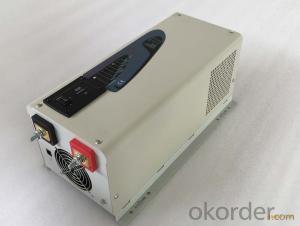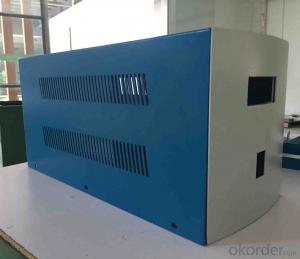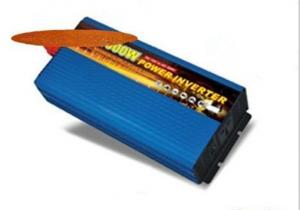6kVA Rack/Tower Puresine Wave Online Extensible G-Sensor LCD UPS with Solar Inverter PCB
- Loading Port:
- Guangzhou
- Payment Terms:
- TT OR LC
- Min Order Qty:
- 30 unit
- Supply Capability:
- 300000 unit/month
OKorder Service Pledge
OKorder Financial Service
You Might Also Like

| Model | RT-6KS | RT-6KL | RT-10KS | RT-10KL | ||
| Rated power | 6KVA | 10KVA | ||||
| Display | LED or LCD, depends on user's choice | |||||
| INPUT | ||||||
| Voltage | 110V:80~138VAC/220V: 120~275VAC | |||||
| Frequency | 110V:46~54Hz or 56~64Hz/220V:40~60Hz/Adjustable by software | |||||
| OUTPUT | ||||||
| Voltage | 110V:110±2%VAC/220V:220±2%VAC | |||||
| Frequency | 110V:46~64Hz/220V:46~54Hz/Same as AC(AC mode) | |||||
| 110V: 50 or 60Hz/220V:50±0.2Hz(Batt. mode) | ||||||
| Wave form | Sine wave | |||||
| BATTERY | ||||||
| QTY. & capacity of battery | 12V/7.5AH*3pcs | ————— | 2V/7.5AH*8pcs | 12V/7.5AH*8pcs | ————— | |
| Nominal DC input voltage | ————— | 36VDC | ————— | 96VDC | ————— | 96VDC |
| Transfer time | 0 ms | |||||
| Overload capability | 110%~150% for 30% seconds then transfer to bypass output, 150% above for 300 milliseconds. | |||||
| ENVIRONMENT | ||||||
| Environment of performance | Temperature 0℃~40℃, Humidity 20%~90% | |||||
| PHYSITAL | ||||||
| (kg) / Net weight (kg) | 19.5 | 110V:11.8 220V:9.1 | 38.4kg(23kg for US+55.4kg for battery pack) | 23 | ||
| (mm) / Unit dimention (mm) | 625*438*130 | 625*438*130(*2 sets, there into 1 set for battery pack) | 625*438*130 | |||
| MANAGEMENT | ||||||
| Interface | 110V:USB+RS232 220V:RJ45/11+RS232, Intelling slot selectable. | |||||

1. Wide range of input voltage
The UPS can offer normal and stable service voltage under its input voltage range. When the input voltage is out of its range the machine will switch to battery mode automatically to keep the output power in order to protect the equipment, such as computers, ensure they will not be damaged by the over high or over low voltage, users can continue the operation of equipment for a while or save the data on computers while the power network is abnormal.
2. Wide range of AVR(Automatic voltage regulation)
In the product’s input voltage range and under 3 steps of intelligent AVR function, it can provide a stable output voltage.
3. Automatic self detection when UPS on(LED).
Before the UPS on, red, yellow, blue LED will light up two times by cycle turns, after self detection UPS switch to AC mode/battery mode or working mode.
4. Silence function
In the "battery mode", shortly press the switch to turn off the buzzer. But the battery is about to run out or the load is too heavy, the buzzer sound cannot be muted.
5. Overload protection
In the battery mode, output voltage turn down correspondingly when it is overload, after the capacity of load is lower than the rated power then output voltage will back to rated value, it ensures the UPS will not shut down by abrupt overload which caused by surging current during the computer is working and other equipment is added.
6. Short circuit protection
When the mis-operation caused the load short circuit or computer failure (such as power tube breakdown of switch) cause short circuit, the UPS will shutdown automatically for protection.
7. The low current switch
This UPS adopts low current switch to extend the service life which is longer than conventional battery and high current switch in AC current path.
8. Automatic charging
There are two charging mode, charging time is faster than ordinary charging mode, higher efficiency, and greatly prolonging the service life of the battery.
9. With a bypass output
Independent bypass output socket for external printers or scanners of computer peripherals, with surge protection of the load.

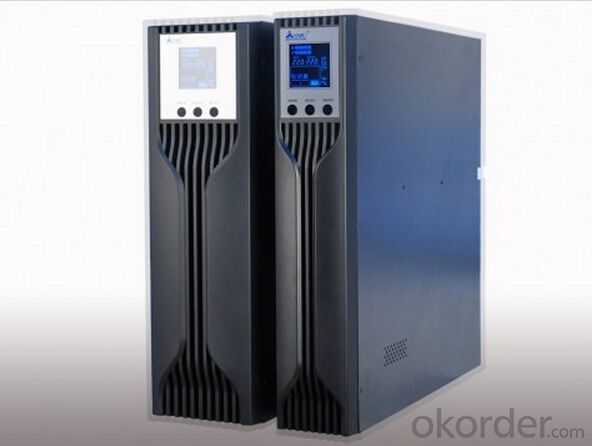
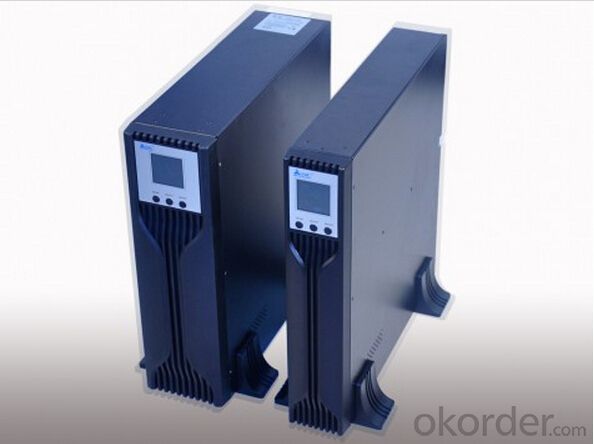
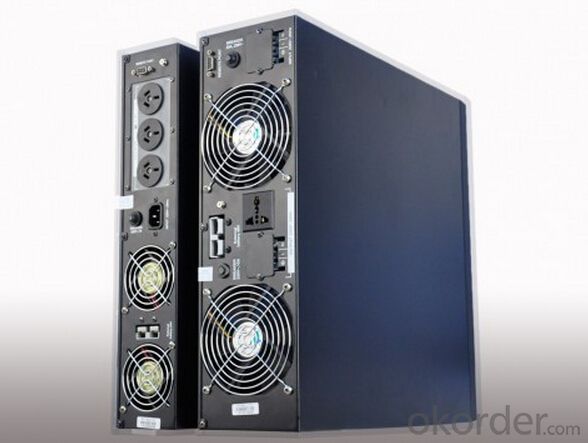
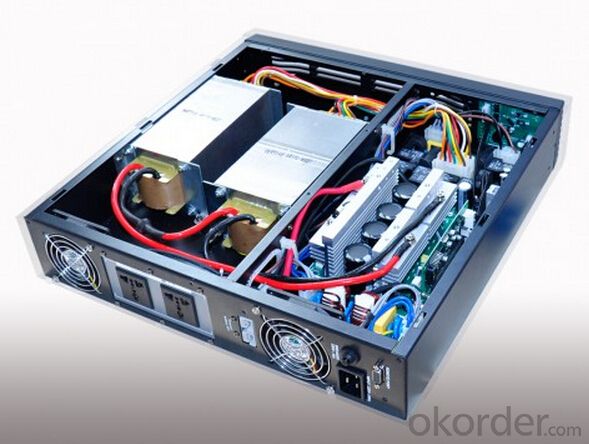
FAQ
1. Where can I buy your products?
You could find our products from dealers or contact our sales team directly. We will provide you with detailed services.
2. How to contact us?
Contact details can be found from website www.okorder.com to contact us. We look forward to providing you with professional services.
3. What is the application field of your products?
Our current GW1500~4600-SS series and GW3000~4600-DS, with the flexible expansion ability and allocation capability, can be used in the small photovoltaic (PV) grid power generation systems of family units as well as the commercial photovoltaic system such as BIPV, BAPV and etc.
4. What kinds of modules do your inventers support?
Our inventers support most of mainstream components and modules in the market. Should you require more details, please do not hesitate to contact our technical personnel.
- Q: Are there any noise or sound considerations with a solar inverter?
- Yes, there are noise considerations with a solar inverter. While solar inverters generally produce low levels of noise, there can be some audible humming or buzzing sound generated during their operation. The noise level can vary depending on the type and model of the inverter. However, modern inverters are designed to minimize noise and are generally considered to be quiet during normal operation.
- Q: What is the role of a solar inverter in a utility-scale system?
- The role of a solar inverter in a utility-scale system is to convert the direct current (DC) electricity produced by the solar panels into alternating current (AC) electricity that can be used by the electrical grid. It ensures the compatibility between the solar power generated and the grid's requirements, including voltage, frequency, and power quality. Additionally, solar inverters often have monitoring and control functions, allowing for remote monitoring and optimization of the system's performance.
- Q: How do you choose the right size solar inverter for a specific solar power system?
- To choose the right size solar inverter for a specific solar power system, you need to consider the capacity of your solar panels, the maximum power output they can generate, and the electrical load you intend to connect to the inverter. Matching the inverter's capacity with the total power output of your panels ensures optimal performance and prevents overloading. It's also crucial to consider any future expansions or changes in energy requirements to select an inverter that can accommodate potential growth. Consulting with a professional or using online calculators can help determine the appropriate size for your solar inverter.
- Q: How does the weight of a solar inverter affect its installation process?
- The weight of a solar inverter can affect its installation process in a few ways. Firstly, a heavier inverter may require additional structural support or mounting equipment to ensure it is securely installed. This could involve reinforcing the mounting surface or using specialized brackets or racks. Secondly, the weight of the inverter may impact the ease of handling and maneuvering during installation, especially if it needs to be installed in elevated or hard-to-reach areas. Lastly, the weight can also impact the overall logistics of the installation, including transportation, lifting, and positioning of the inverter.
- Q: What is the purpose of a solar inverter?
- The purpose of a solar inverter is to convert the direct current (DC) electricity generated by solar panels into alternating current (AC) electricity that can be used to power household appliances or be fed back into the electrical grid.
- Q: Can a solar inverter be used in a building-integrated photovoltaic system?
- Yes, a solar inverter can be used in a building-integrated photovoltaic system. The solar inverter is an essential component that converts the DC (direct current) electricity produced by the photovoltaic panels into AC (alternating current) electricity that can be used to power electrical devices and appliances in a building. Therefore, it plays a crucial role in ensuring the seamless integration of solar energy into the building's electrical system.
- Q: Can a solar inverter be used in areas with high levels of lightning activity?
- Yes, solar inverters can be used in areas with high levels of lightning activity. However, it is important to ensure that the solar inverter is properly grounded and installed with appropriate lightning protection measures to minimize the risk of damage caused by lightning strikes.
- Q: How does a solar inverter handle voltage sag and swell?
- A solar inverter handles voltage sag and swell by utilizing its power conditioning capabilities. When it detects a voltage sag (a temporary decrease in voltage), the inverter adjusts its internal control algorithms to provide a stable and consistent output voltage to the connected loads. Similarly, in the case of voltage swell (a temporary increase in voltage), the inverter modifies its operation to prevent overvoltage conditions and ensure a safe and regulated output. Through continuous monitoring and intelligent control, a solar inverter effectively manages voltage fluctuations to maintain stable power delivery.
- Q: How does a solar inverter contribute to reducing carbon emissions?
- A solar inverter helps reduce carbon emissions by converting the direct current (DC) electricity generated by solar panels into alternating current (AC) electricity that can be used to power homes, businesses, or the electrical grid. By enabling the use of clean and renewable solar energy, solar inverters reduce the need for electricity generated from fossil fuel sources, such as coal or natural gas power plants. This results in a significant reduction in carbon emissions, as solar power is a clean and sustainable alternative to traditional energy sources.
- Q: What is the role of maximum power control in a solar inverter?
- The role of maximum power control in a solar inverter is to optimize the performance and efficiency of the solar PV system. It ensures that the solar panels are operating at their maximum power point, allowing them to generate the highest possible amount of electricity from the available sunlight. This control mechanism adjusts the voltage and current levels to match the load requirements, enabling the inverter to deliver the maximum power output to the grid or connected devices. By actively managing and regulating the power flow, maximum power control helps to maximize the overall energy production and utilization of the solar installation.
Send your message to us
6kVA Rack/Tower Puresine Wave Online Extensible G-Sensor LCD UPS with Solar Inverter PCB
- Loading Port:
- Guangzhou
- Payment Terms:
- TT OR LC
- Min Order Qty:
- 30 unit
- Supply Capability:
- 300000 unit/month
OKorder Service Pledge
OKorder Financial Service
Similar products
Hot products
Hot Searches
Related keywords
